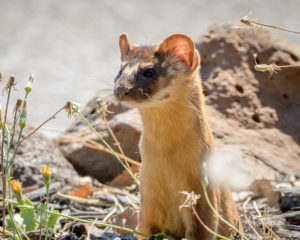On sandy beaches from Alaska to Baja, you’ve likely seen plovers, sanderlings, willets, and other shorebirds foraging for food in the swash zone, where waves perpetually cover and uncover the sand. One of the creatures the shorebirds are hunting is the mole crab, or sand crab, a vital part of the food web of this habitat.
Young people in the LiMPETS program (Long-term Monitoring and Experiential Training for Students) have been monitoring mole crabs on Bay Area beaches since 2002, and their recent findings give cause for concern. Students from 30 schools looked at 15 different sites, including Stinson and Ocean beaches. Data collected at Stinson reveal a 90 percent decrease in abundance between 2002 and 2007, while numbers at Ocean Beach also decreased dramatically, from 100 to 300 crabs per square meter in 2002 to only 6 in 2007.
“No one knows what is causing the decline,” says Amy Dean, education manager at Farallones Marine Sanctuary Association, the nonprofit that runs the National Oceanic and Atmospheric Administration’s LiMPETS program locally. “We do know that there have been a lot fewer baby mole crabs making it back to the beaches.”
Sandy beaches may be relaxing for humans, but they’re a challenge for creatures that have to contend with crashing waves, fluctuating tides, shifting sands, and predators from land, sea, and air. To survive in this environment, mole crabs spend most of their time buried in the sand. With their five pairs of paddle-like legs, they can swim and dig and crawl like their crab namesakes, but only backwards. They burrow into the sand tailfirst with their eyestalks facing the sea and two sets of antennae reaching out of the sand, one for breathing and the other for capturing phytoplankton. The females, which are larger than the males, can produce up to 50,000 eggs every month during the reproductive season, February to October. Once the eggs hatch, they drift with the tides for four months while they go through their larval stages.
The LiMPETS program has two main goals, says Dean. One is to establish baseline data for one of the most abundant and important invertebrates on sandy beaches. “The program looks at trends, abundance, and distribution,” she explains. “It’s our hope that someone else will identify the factors causing decline.” The second goal of the program is to develop a new generation of ocean stewards. Check them out at www.farallones.org/education/student_monitoring.php.

.jpg)



